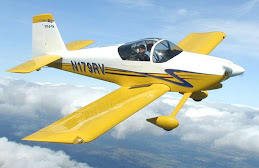Dimpled access plates. Removed 5th rib from leading edge and drilled out aft flange to clear main spar rivet heads befor replacing ribs in their respective leading edge assemblies. Assembled the left wing skeleton. Match-drilled ribs to spars. Marked ribs for position. Dissasembled and deburred. Assembled right wing skeleton and match drilled.
 Even though it could be done much later, the instructions mention dimpling the inspection plates, so I decided to oblige. I am colouring each instruction with day-glow highlight marker when it is done and it has become something of an obsession to get as much as possible high-lighted - especially if it means covering the last patches of un-highlighted text on any particular page.
Even though it could be done much later, the instructions mention dimpling the inspection plates, so I decided to oblige. I am colouring each instruction with day-glow highlight marker when it is done and it has become something of an obsession to get as much as possible high-lighted - especially if it means covering the last patches of un-highlighted text on any particular page.
 I assembled the left wing skeleton with clecos and match drilled it before taking it apart again and deburring all holes. I then went on to assemble the right wing.
I assembled the left wing skeleton with clecos and match drilled it before taking it apart again and deburring all holes. I then went on to assemble the right wing. While building the emp, I had difficulty getting ribs and stiffners back to their match-drilled positions because the sharpie markings came off at the etching (or even cleaning) stage. So, I came up with a system that uses a punch mark in conjunction with the pre-punched rivet holes in the flanges of each rib as a code to indicate position. To designate the outboard right wing rib as No.1, I put a punch mark to the right of the first hole on the bottom flange next to the aft spar. The next inboard rib is No.2 so it gets a punch mark to the right of the second hole from the aft spar, and so on for the remaining 13. On the left wing, the same will apply except that the punch marks will be to the left of the rivet hole. Leading edge ribs will be identified in the same way in a separate numbering sequence of their own - foolproof!
While building the emp, I had difficulty getting ribs and stiffners back to their match-drilled positions because the sharpie markings came off at the etching (or even cleaning) stage. So, I came up with a system that uses a punch mark in conjunction with the pre-punched rivet holes in the flanges of each rib as a code to indicate position. To designate the outboard right wing rib as No.1, I put a punch mark to the right of the first hole on the bottom flange next to the aft spar. The next inboard rib is No.2 so it gets a punch mark to the right of the second hole from the aft spar, and so on for the remaining 13. On the left wing, the same will apply except that the punch marks will be to the left of the rivet hole. Leading edge ribs will be identified in the same way in a separate numbering sequence of their own - foolproof!


No comments:
Post a Comment